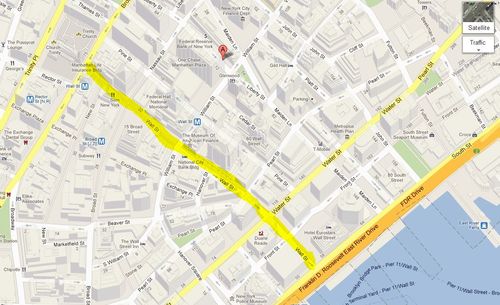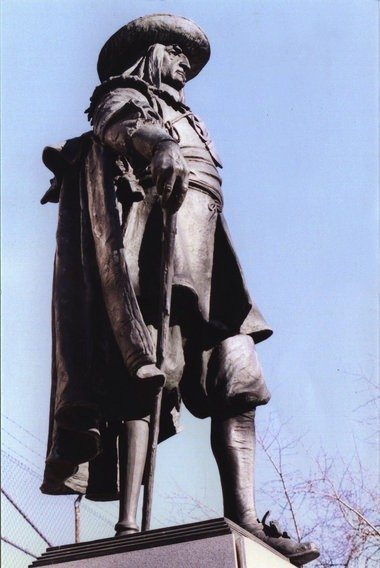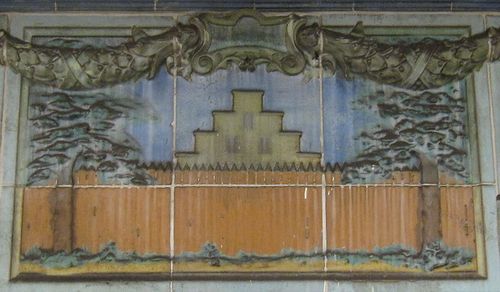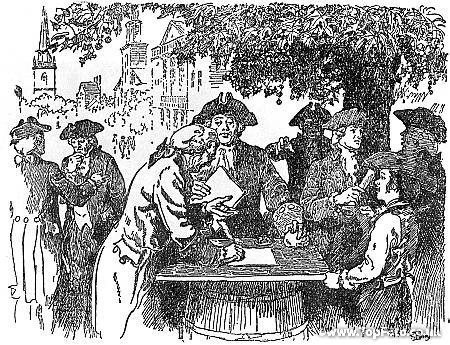
Did you ever wonder why Wall Street is called Wall Street?
We all talk about Occupy Wall Street, an area of downtown New York that stretches across eight blocks from Broadway to South Street on the East River in Lower Manhattan.

Over time, the phrase has come to symbolise the financial markets of the United States as a whole.
This is down to the fact that Wall Street is the home of the New York Stock Exchange, as well as several other major exchanges who have or had headquarters in the Wall Street area including NASDAQ, the New York Mercantile Exchange, the New York Board of Trade, and the former American Stock Exchange.
But do you ever wonder why it’s called Wall Street?
Here’s the lowdown.
Wall Street traces its origins to the original early settlers of America.
Back in the 17th century, way before Independence and pucker stock markets prevailed, early Dutch settlers were building what has now become New York, originally known as New Amsterdam of course.
The key man at this time was one Peter Stuyvesant, he of the famous cigarette brand and wooden leg.

Of course, tobacco was one of the things traded by colonists, but back in 1647 things were very different. Manhattan Island was owned by the Dutch West India Company and they appointed Peter – or Pieter or Petrus if you prefer – to be the new Director General of New Amsterdam, the main fort and colony settled on the tip of the island.
Various trips and battles took place between the Dutch and other settlers – the British, Spanish and French – throughout this period, and during these moments Peter would lead troops to fight, only to find, on his return to New Amsterdam, that the Native Americans had laid plunder to the town.
One particular occasion was a major issue for Stuyvesant.
He had sailed with seven ships and 700 men to Wilmington, Delaware, and fought a battle with the Swedish settlers who had laid claim to the land, naming it New Sweden.
Stuyvesant won but it angered the Susquehannock Nation, who were close trading partners with the Swedish and liked them. The Susquehannocks gathered their warriors and, with other allied Native Americans, attacked several New Netherland settlements with New Amsterdam being the focal point, in September 1655.
Stuyvesant was incandescent when he returned to find the devastation reaped upon his lands and colony, and ordered the building of a strong 12 foot high wall around New Amsterdam to protect them from further incursions.
Thus began the building of "de Waal Straat".

Waal Straat followed the path of a bustling commercial thoroughfare which joined the banks of the East River with the Hudson River in the west, and was home to many early merchants’ warehouses and shops.
The wall also provided a good meeting spot for trading, and merchants and traders would gather there by a buttonwood tree that had been planted on Waal Straat, for the auctions of their goods through the buying and selling of shares and bonds in their shipping ventures.

A century later, after the Dutch ceded New Amsterdam to the British who renamed it New York in 1664, merchants were fed up with the fees being charged by the auctioneers for their goods, shares and bonds.
Therefore, in March 1792, twenty-four of the largest merchants decided to change the way the securities business was run. These merchants signed the Buttonwood Agreement, named after their traditional meeting place.
The agreement called for the signers to trade securities only among themselves, to set trading fees, and not to participate in other auctions of securities. These twenty-four men had founded what was to become the New York Stock Exchange, which is still there today at 11 Wall Street.
If this is of interest, I might post a few more historical pieces over time but, for the moment, if you ever wondered why Wall Street is called Wall Street ... now you know!
Chris M Skinner
Chris Skinner is best known as an independent commentator on the financial markets through his blog, TheFinanser.com, as author of the bestselling book Digital Bank, and Chair of the European networking forum the Financial Services Club. He has been voted one of the most influential people in banking by The Financial Brand (as well as one of the best blogs), a FinTech Titan (Next Bank), one of the Fintech Leaders you need to follow (City AM, Deluxe and Jax Finance), as well as one of the Top 40 most influential people in financial technology by the Wall Street Journal's Financial News. To learn more click here...

